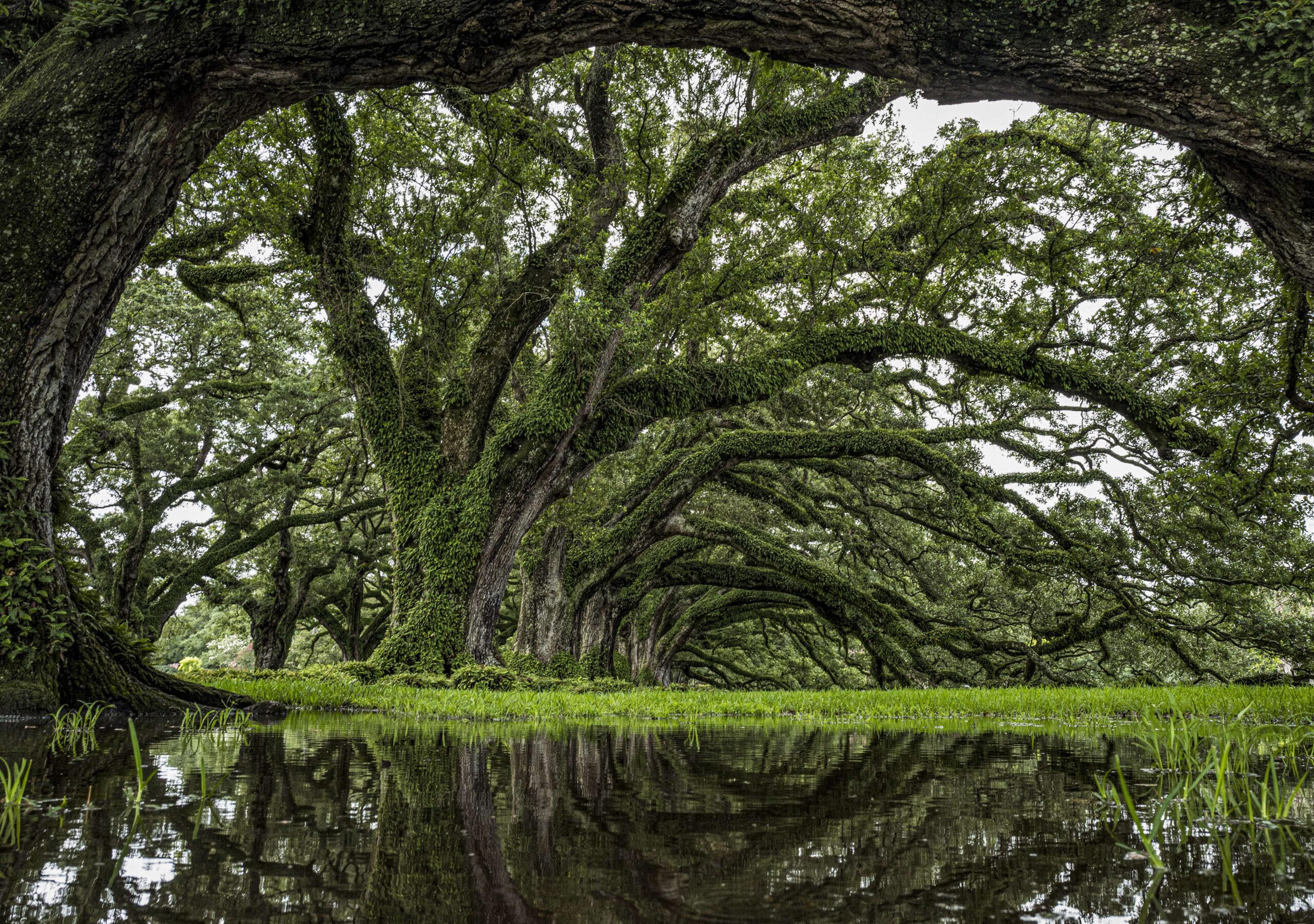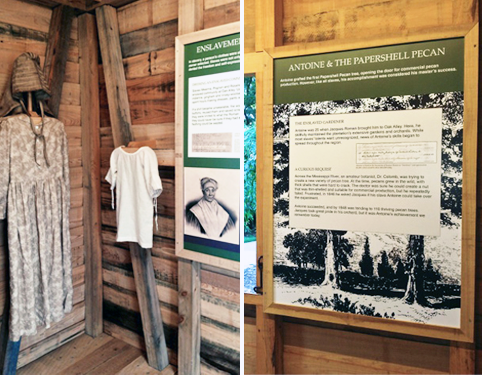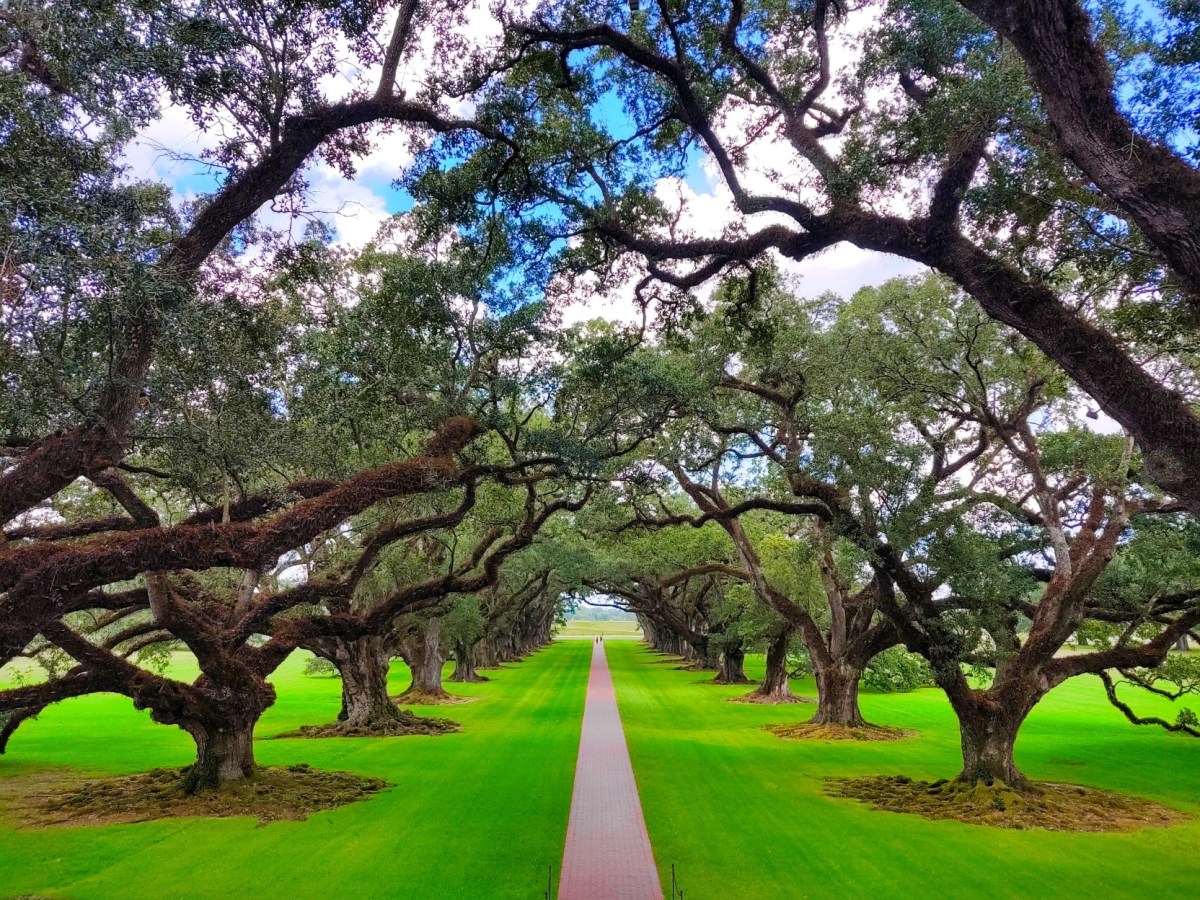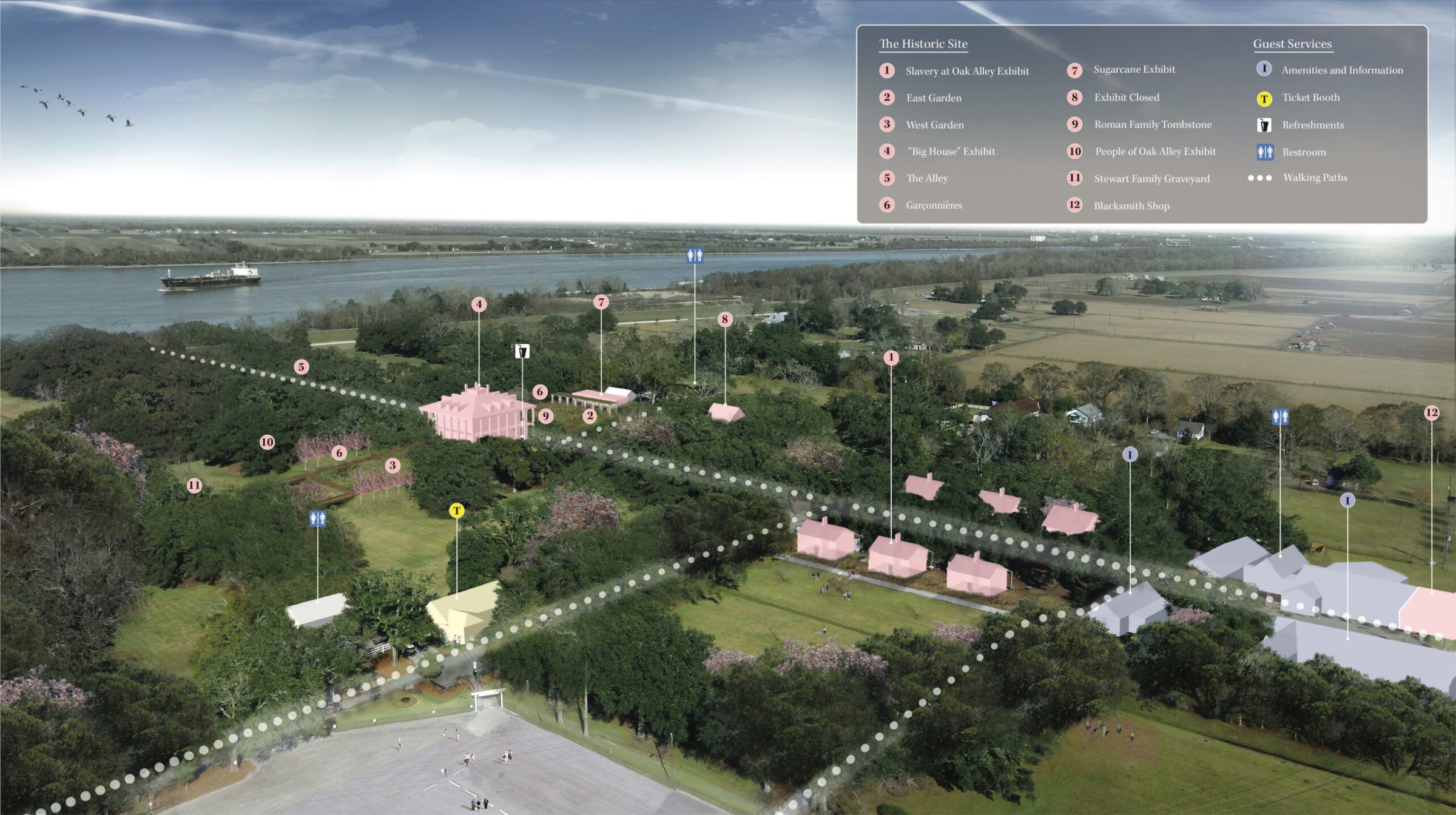The Landscape
 From its 28 Oaks to its open spaces, to its hidden nooks and crannies, Oak Alley’s Landscape tells the story of a plantation in its evolution. Wide pastures stand where a Pecan Grove once thrived. A 1920’s formal garden quietly preserves the remains of a 1830’s kitchen hidden under its turf. As a landscape that speaks truthfully of its past with the parts that remain, it offers visitors an unrestricted opportunity to detach, contemplate and imagine.
From its 28 Oaks to its open spaces, to its hidden nooks and crannies, Oak Alley’s Landscape tells the story of a plantation in its evolution. Wide pastures stand where a Pecan Grove once thrived. A 1920’s formal garden quietly preserves the remains of a 1830’s kitchen hidden under its turf. As a landscape that speaks truthfully of its past with the parts that remain, it offers visitors an unrestricted opportunity to detach, contemplate and imagine.
(Insider tip: Come early before the crowds)
The Slavery at Oak Alley Exhibit

Oak Alley as a sugar plantation was built by and relied on enslaved men, women and children. This self-guided exhibit focuses on some of the individuals who were owned and kept on the plantation, their lives and living conditions. It also includes a look into life after emancipation, as laborers continued to live in the increasingly squalid housing until the 20th century.
(Insider’s tip: No time restrictions so feel free to allow at least an hour for this exhibit)
The “Big House” Exhibit
 Plantation mansions were called “Big Houses” referencing their relative difference in stature compared to the enslaved dwellings and other outbuildings that made up the sugar plantation complex. The ‘Big House’ at Oak Alley is no exception. Built with success, prestige and power in mind, the Oak Alley ‘Big House’ commands attention. (Insider’s tip: if a person in your party is unable to climb stairs, be sure to let your interpreter know. The 2nd floor portion of the visit is available on Ipad for guests who can not travel to the second floor. Please also note that while photography is not permitted inside the mansion, visitors are encouraged to take photos on the balcony.) We also recommend you purchase your ticket online, in advance, to secure your tour time for this exhibit.
Plantation mansions were called “Big Houses” referencing their relative difference in stature compared to the enslaved dwellings and other outbuildings that made up the sugar plantation complex. The ‘Big House’ at Oak Alley is no exception. Built with success, prestige and power in mind, the Oak Alley ‘Big House’ commands attention. (Insider’s tip: if a person in your party is unable to climb stairs, be sure to let your interpreter know. The 2nd floor portion of the visit is available on Ipad for guests who can not travel to the second floor. Please also note that while photography is not permitted inside the mansion, visitors are encouraged to take photos on the balcony.) We also recommend you purchase your ticket online, in advance, to secure your tour time for this exhibit.
The East & West Gardens
 Over time, several gardens and ornamental plantings were established by the many residents of Oak Alley. The sprawling lawns and open pastures dotted with mature trees, ornamental gardens and agriculture crops have come to define the character of Oak Alley’s landscape. Visitors have had the opportunity to witness many of these but most notably the formal gardens and alley of oaks. Opportunities exist to weave these elements together into a tapestry of history and cultural landscape.
Over time, several gardens and ornamental plantings were established by the many residents of Oak Alley. The sprawling lawns and open pastures dotted with mature trees, ornamental gardens and agriculture crops have come to define the character of Oak Alley’s landscape. Visitors have had the opportunity to witness many of these but most notably the formal gardens and alley of oaks. Opportunities exist to weave these elements together into a tapestry of history and cultural landscape.
The Sugarcane Theatre
 With a 3 dimensional map of the Roman family empire and exhibit detailing how sugarcane was grown and processed—both when Oak Alley was an operating plantation as well as today—this space has lots to offer.
With a 3 dimensional map of the Roman family empire and exhibit detailing how sugarcane was grown and processed—both when Oak Alley was an operating plantation as well as today—this space has lots to offer.
(Insider’s Tip: Visit this exhibit before you reach the mansion, it is packed with stories of how the plantation functioned, as well as just how important slavery was to creating the plantation and the mansion you are about to tour.)
The People of Oak Alley Exhibit
 This exhibt covers the period from 1866-1924, when the plantation was auctioned to cover the first owners debts until the last resident owners purchased the property in 1925.
This exhibt covers the period from 1866-1924, when the plantation was auctioned to cover the first owners debts until the last resident owners purchased the property in 1925.
The Blacksmith Shop
 This forge is tribute to the enduring legacy of Louisiana craftsmen and shares the history of forging metalwork on plantations.
This forge is tribute to the enduring legacy of Louisiana craftsmen and shares the history of forging metalwork on plantations.



 From its 28 Oaks to its open spaces, to its hidden nooks and crannies, Oak Alley’s Landscape tells the story of a plantation in its evolution. Wide pastures stand where a Pecan Grove once thrived. A 1920’s formal garden quietly preserves the remains of a 1830’s kitchen hidden under its turf. As a landscape that speaks truthfully of its past with the parts that remain, it offers visitors an unrestricted opportunity to detach, contemplate and imagine.
From its 28 Oaks to its open spaces, to its hidden nooks and crannies, Oak Alley’s Landscape tells the story of a plantation in its evolution. Wide pastures stand where a Pecan Grove once thrived. A 1920’s formal garden quietly preserves the remains of a 1830’s kitchen hidden under its turf. As a landscape that speaks truthfully of its past with the parts that remain, it offers visitors an unrestricted opportunity to detach, contemplate and imagine.
 Plantation mansions were called “Big Houses” referencing their relative difference in stature compared to the enslaved dwellings and other outbuildings that made up the sugar plantation complex. The ‘Big House’ at Oak Alley is no exception. Built with success, prestige and power in mind, the Oak Alley ‘Big House’ commands attention. (Insider’s tip: if a person in your party is unable to climb stairs, be sure to let your interpreter know. The 2nd floor portion of the visit is available on Ipad for guests who can not travel to the second floor. Please also note that while photography is not permitted inside the mansion, visitors are encouraged to take photos on the balcony.) We also recommend you purchase your ticket online, in advance, to secure your tour time for this exhibit.
Plantation mansions were called “Big Houses” referencing their relative difference in stature compared to the enslaved dwellings and other outbuildings that made up the sugar plantation complex. The ‘Big House’ at Oak Alley is no exception. Built with success, prestige and power in mind, the Oak Alley ‘Big House’ commands attention. (Insider’s tip: if a person in your party is unable to climb stairs, be sure to let your interpreter know. The 2nd floor portion of the visit is available on Ipad for guests who can not travel to the second floor. Please also note that while photography is not permitted inside the mansion, visitors are encouraged to take photos on the balcony.) We also recommend you purchase your ticket online, in advance, to secure your tour time for this exhibit. Over time, several gardens and ornamental plantings were established by the many residents of Oak Alley. The sprawling lawns and open pastures dotted with mature trees, ornamental gardens and agriculture crops have come to define the character of Oak Alley’s landscape. Visitors have had the opportunity to witness many of these but most notably the formal gardens and alley of oaks. Opportunities exist to weave these elements together into a tapestry of history and cultural landscape.
Over time, several gardens and ornamental plantings were established by the many residents of Oak Alley. The sprawling lawns and open pastures dotted with mature trees, ornamental gardens and agriculture crops have come to define the character of Oak Alley’s landscape. Visitors have had the opportunity to witness many of these but most notably the formal gardens and alley of oaks. Opportunities exist to weave these elements together into a tapestry of history and cultural landscape. With a 3 dimensional map of the Roman family empire and exhibit detailing how sugarcane was grown and processed—both when Oak Alley was an operating plantation as well as today—this space has lots to offer.
With a 3 dimensional map of the Roman family empire and exhibit detailing how sugarcane was grown and processed—both when Oak Alley was an operating plantation as well as today—this space has lots to offer. This exhibt covers the period from 1866-1924, when the plantation was auctioned to cover the first owners debts until the last resident owners purchased the property in 1925.
This exhibt covers the period from 1866-1924, when the plantation was auctioned to cover the first owners debts until the last resident owners purchased the property in 1925. This forge is tribute to the enduring legacy of Louisiana craftsmen and shares the history of forging metalwork on plantations.
This forge is tribute to the enduring legacy of Louisiana craftsmen and shares the history of forging metalwork on plantations.